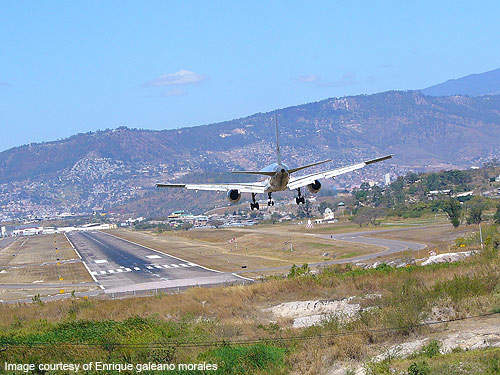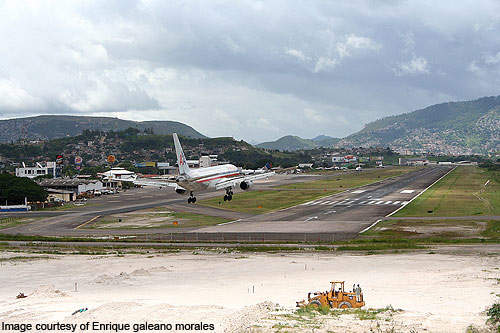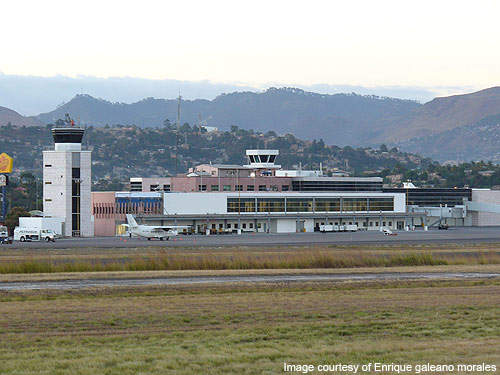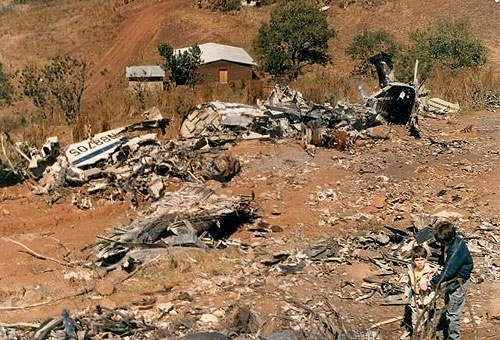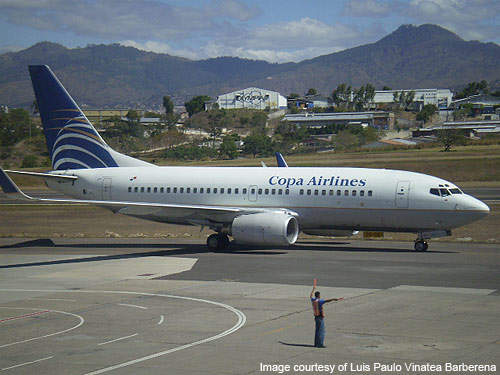Toncontín International Airport, also called Teniente Coronel Hernán Acosta Mejía Airport, is located in Tegucigalpa, the capital city of Honduras.
The airport is located about 6km from the city centre in south Tegucigalpa. It was built in 1921 and serves both civil and military operations. It is one of the oldest continuously operational airports in Central America.
The Toncontín airport has a single asphalt runway (02/20) which is 2,163m (7,096ft) long. The airport was built at an elevation of 1,005m (3,294ft).
The hilly terrain of the region played a vital role in strategic military warfare in the 1924 Civil War. The airport has been notorious due to its short runway and danger posed by the mountainous geographical approach.
The airport is being modernised to meet Class B safety and operational standards of the ICAO. The remodelling was started in 2000 and most of the works were completed by 2006.
The airport is served by AVIAC, TACA, Continental, Aerolineas Sosa, Delta, American, Copa, Central American, CM and Lanhsa Airlines. It handled 493,000 passengers in 2010. The ongoing projects are expected to attract more tourists to Honduras.
Project financing
Honduras International Airports was the owner of the four international airports in the country. In 2000, the government decided to privatise the airports to improve the services.
In February 2000, a technical service agreement was signed with A-port Operaciones to operate the airports under the urgent improvement plan.
Interairports, the concessionaire company of A-port Operaciones, will operate the airports for 20 years.
The PMU also includes modernisation and maintenance of the airports. The airport is managed by the Airport Corporation of Tegucigalpa (ACT).
Interairports is investing about $52m towards the airport improvements. The investment is partly funded by the Japanese Government.
Toncontín International Airport expansion
In 2006, Toncontín airport’s existing terminal building was expanded and renovated. A new terminal building, three times the size of the old terminal, was constructed. The runway was extended and the customer and operational areas were also refurbished.
The development project also includes procurement, installation and operation of new infrastructure and aeronautical instruments.
The new additions so far include boarding bridges, security scanning equipment and so on. The car parking area will be refurbished and expanded to a capacity of 360 vehicles.
Runway extensions for Toncontín International Airport
The runway 02/20 was 1,863m (6,112ft) long. A large portion of hillside was removed at the threshold of the approach runway 02 in 2007 to reduce landing risks.
A 300m (984ft) extension of the asphalt runway was completed in March 2010, along with improved lighting systems.
The extension was aimed at facilitating safer landings and take-offs. The cost of the project was HNL54m ($2.86m).
The runway can accommodate larger commercial aircraft such as Douglas DC-8, Boeing 727 and C-17 Globemaster as a result.
Toncontín International Airport terminal features
The old terminal building serves domestic flights, while the new terminal is used for international flights. Two gates are present in each terminal.
The terminals have various facilities such as Dunkin’ Donuts, Wendy’s, souvenir stores, a duty-free store, an ATM, several restaurants and cafés, a post office, airline lounges and bureau de change. Global Air Rescue provides the ambulance services at the airport.
Contractors involved in the project
The main contractors involved in the airport reconstruction project are KBR and the Ministry of Public Works, Transportation and Housing (SOPTRAVI).
Airport controversy
About 15 accidents have been recorded at the airport since 1962 pertaining to its difficult mountainous terrain approach, bad weather conditions and human error.
In October 1989, the scheduled Tan-Sahsa Flight 414 (Boeing 727-200) crashed into a nearby hill while approaching the runway, killing 127 people aboard.
In May 2008, TACA Flight 390 (Airbus A320) overran the runway, killing three people aboard and two on the ground. The accident occurred due to the pilot’s error during landing. In February 2011, a Let L-410 Turbolet of Central American Airways crashed in Las Mesitas town killing 14 people.

